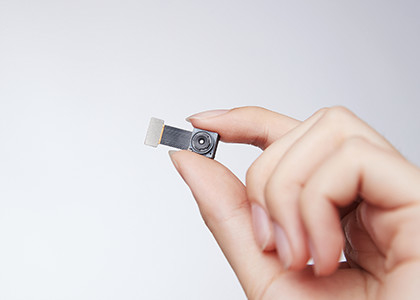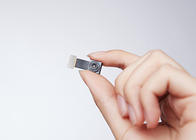-
Thermal Camera Core
-
Thermal Security Camera
-
Drone Thermal Camera
-
EO IR Systems
-
Thermal Imaging Binoculars
-
Infrared Thermal Camera Module
-
High Resolution Thermal Camera Module
-
Cooled Infrared Detectors
-
Optical Gas Imaging
-
Thermal Camera For Fever Detection
-
Cooled Camera Modules
-
Vehicle Mounted Thermal Camera
-
Integrated Dewar Cooler Assembly
-
Uncooled Infrared Detectors
OEM Small Size Uncooled LWIR Thermal Imaging Module Camera 256x192 12μM

Contact me for free samples and coupons.
Whatsapp:0086 18588475571
Wechat: 0086 18588475571
Skype: sales10@aixton.com
If you have any concern, we provide 24-hour online help.
x| Resolution | 256x192 | Pixel Pitch | 12μm |
|---|---|---|---|
| Spectral Range | 8~14μm | Temperature Range | -20℃~+120℃ (Customizable) |
| NETD | ≤45mK | Size | 15x13x6.83mm |
| Highlight | LWIR Thermal Imaging Camera Module,OEM Thermal Imaging Camera Module,Uncooled Thermal Imaging Core 12uM |
||
Light Weight LWIR Uncooled Thermal Imaging Core with 256x192 Resolution, 12μm Pixel Size
TIMO256 uncooled IR imaging module, also known as the uncooled thermal module, is one of the TIMO infrared camera module family developed by Global Sensor Technology (GST). It includes an exceptionally small size 256x192 / 12μm wafer level package (WLP) infrared detector that covers long wavelength from 8 to 14 microns.
Thanks to the WLP technology, the TIMO256 thermal IR camera module achieves super micro structure, ultra low cost expenditure while offers greater sensitivity and superior image quality at an affordable price, enabling the customer to choose the most suitable type according to their own requirements.
Due to its fully optimized structure, TIMO256 thermal camera core is popular and widely used in infrared thermal imaging applications such as Thermography, Epidemic Prevention, Smart Hardware, AIoT etc.
- Detector: WLP uncooled microbolometer
- Resolution: 256x192 / 12 μm
- Miniature Size: 15x13x6.83mm
- NETD: ≤45mK
| Model | TIMO-256 |
| IR Detector Performance | |
| Resolution | 256x192 |
| Pixel Pitch | 12μm |
| Spectral Range | 8~14μm |
| NETD | ≤45mK |
| Lens Type | WLO |
| Focus Mode | Fixed Zoom |
| HFOV | 53°±1° |
| Depth of Field | 10cm to Infinity |
| Frame Rate | 1~30Hz (Customizable) |
| Temperature Measurement | |
| Temperature Range | -20°C ~ +120°C (Customizable) |
| Temperature Accuracy | Customizable (Meet the Requirements of Body or Industrial Thermography) |
| Interface/Control | |
| AVDD | 3.6V±0.05V |
| VSK/VDET | 5.0±0.05V |
| DVDD | 1.8V±0.05V |
| Interface | Digital Interface |
| Power Consumption | 70mW |
| Physical Characteristics | |
| Dimension (mm) | 15x13x6.83 (The Specifications Shall Prevail) |
| Operation Temperature | -20°C ~ +60°C |
| Storage Temperature | -40°C ~ +85°C |
The TIMO256 thermal camera core is widely used in many areas, such as Thermography, Intelligent Hardware, Smart Building, Smart Home, AIoT etc.
![]()
![]()
1. Thermal Image Vs. Visual Image
Visible light is an electromagnetic wave that can be seen by humans. Its wavelength range generally falls between 360-400 nm~760-830nm. This electromagnetic spectrum is also called the visible spectrum, and its frequency range is 830-750THz~395-360THz.
Infrared is an electromagnetic wave with a wavelength between microwave and visible light. Its wavelength is between 760 nanometers (nm) and 1 millimeter (mm). It is an invisible light with a wavelength longer than red light. The frequencies are approximately in the range of 430 THz to 300 GHz.
2. Detector of Thermal Image & Visual Image
For the core detectors of imaging device, visible light devices use the CCD and CMOS detector, while thermal imaging uses cooled and uncooled detector. The main difference is that visible light CCD/CMOS can perceive light waves in the visible light band, and thermal imaging detectors can sense thermal radiation light waves in the infrared band. Infrared thermal imaging detectors are divided into many types according to different manufacturing processes and packaging materials. The more macroscopic feeling is that infrared thermal imaging detectors are more expensive than visible light CCDs.




